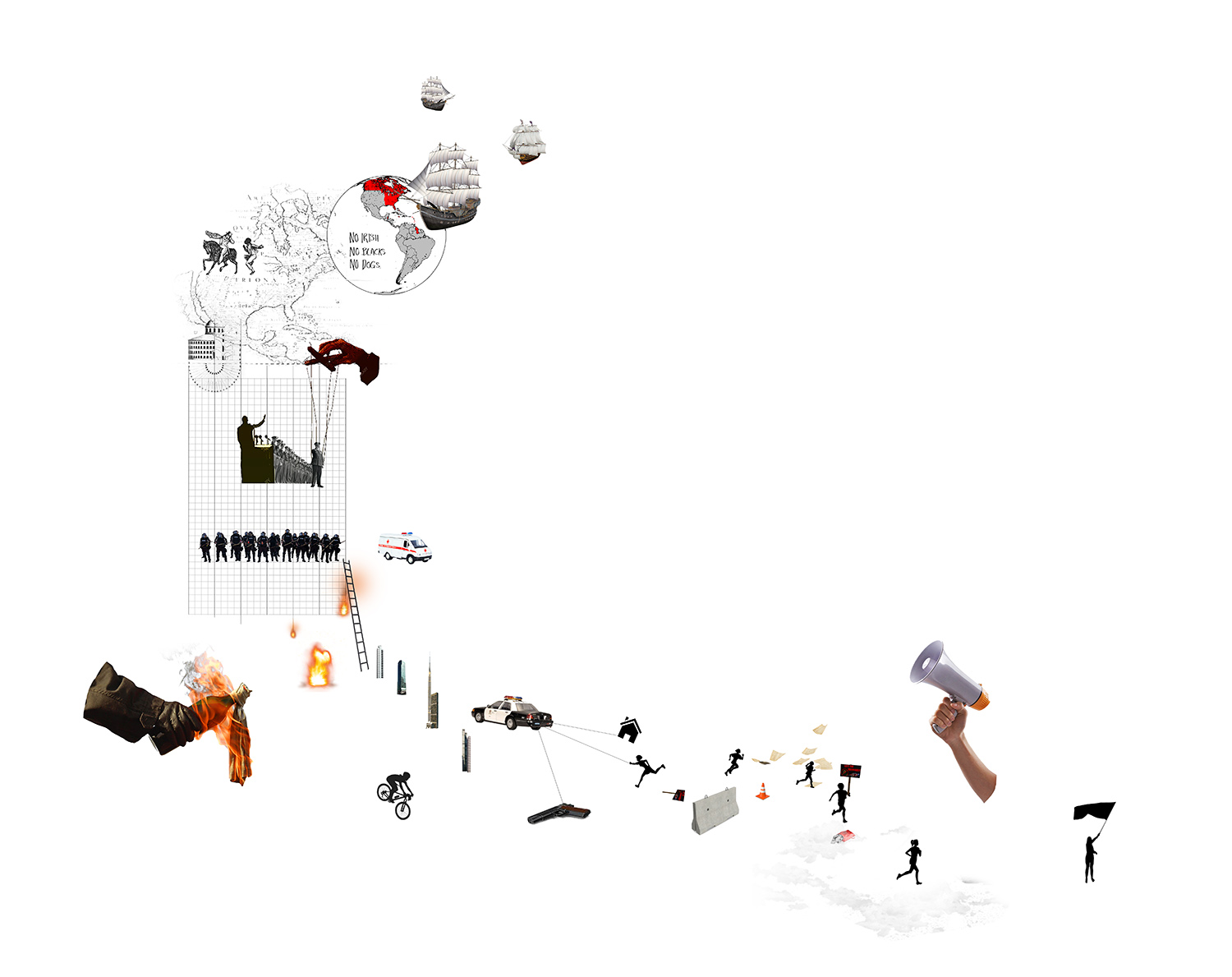CRISTINA TERENTII, MArch
Disobedient Architecture
Throughout the history of state-building, systems in power were translated into urban architecture. Public spaces and buildings were designed to maintain order and reinforce the socio-political narrative – architecture became a tool of support to the status quo. In response to some of the harmful practices that persist, citizens show their collective dissatisfaction in various forms of disobedience, such as protest. This disobedient assemblage of bodies and objects within the existing urban fabric has the potential to challenge the status quo, and re-organize power structures ingrained in physical space.
During the summer of 2020, the protest demonstrations culminated in the creation of the Capitol Hill Autonomous Zone (C.H.A.Z.) in Seattle. The temporary occupation was an attempt to build an alternative mode of governance and civic expression in hopes to bring changes into the American socio-political system. The architectural poten- tial of disobedience will be revealed through the study of harmful narratives ingrained in physical space, as well as how C.H.A.Z. challenged them. The research culminates in the final project of the disobedient People Zone: temporality, adaptability, and plurality expressed in built form, with intent to continuously support the civic voice.
Disobedient Architecture
Throughout the history of state-building, systems in power were translated into urban architecture. Public spaces and buildings were designed to maintain order and reinforce the socio-political narrative – architecture became a tool of support to the status quo. In response to some of the harmful practices that persist, citizens show their collective dissatisfaction in various forms of disobedience, such as protest. This disobedient assemblage of bodies and objects within the existing urban fabric has the potential to challenge the status quo, and re-organize power structures ingrained in physical space.
During the summer of 2020, the protest demonstrations culminated in the creation of the Capitol Hill Autonomous Zone (C.H.A.Z.) in Seattle. The temporary occupation was an attempt to build an alternative mode of governance and civic expression in hopes to bring changes into the American socio-political system. The architectural poten- tial of disobedience will be revealed through the study of harmful narratives ingrained in physical space, as well as how C.H.A.Z. challenged them. The research culminates in the final project of the disobedient People Zone: temporality, adaptability, and plurality expressed in built form, with intent to continuously support the civic voice.


Control is built into the urban architecture and its public systems. Architecture of protest is an opportunity to stand up to the status quo, disrupting the flux.
Disobedience spreading through Seattle, sparked by the Capitol Hill Autonomous Zone (C.H.A.Z.) created in the summer of 2020.


Future of Disobedient Architecture in Different Countries.